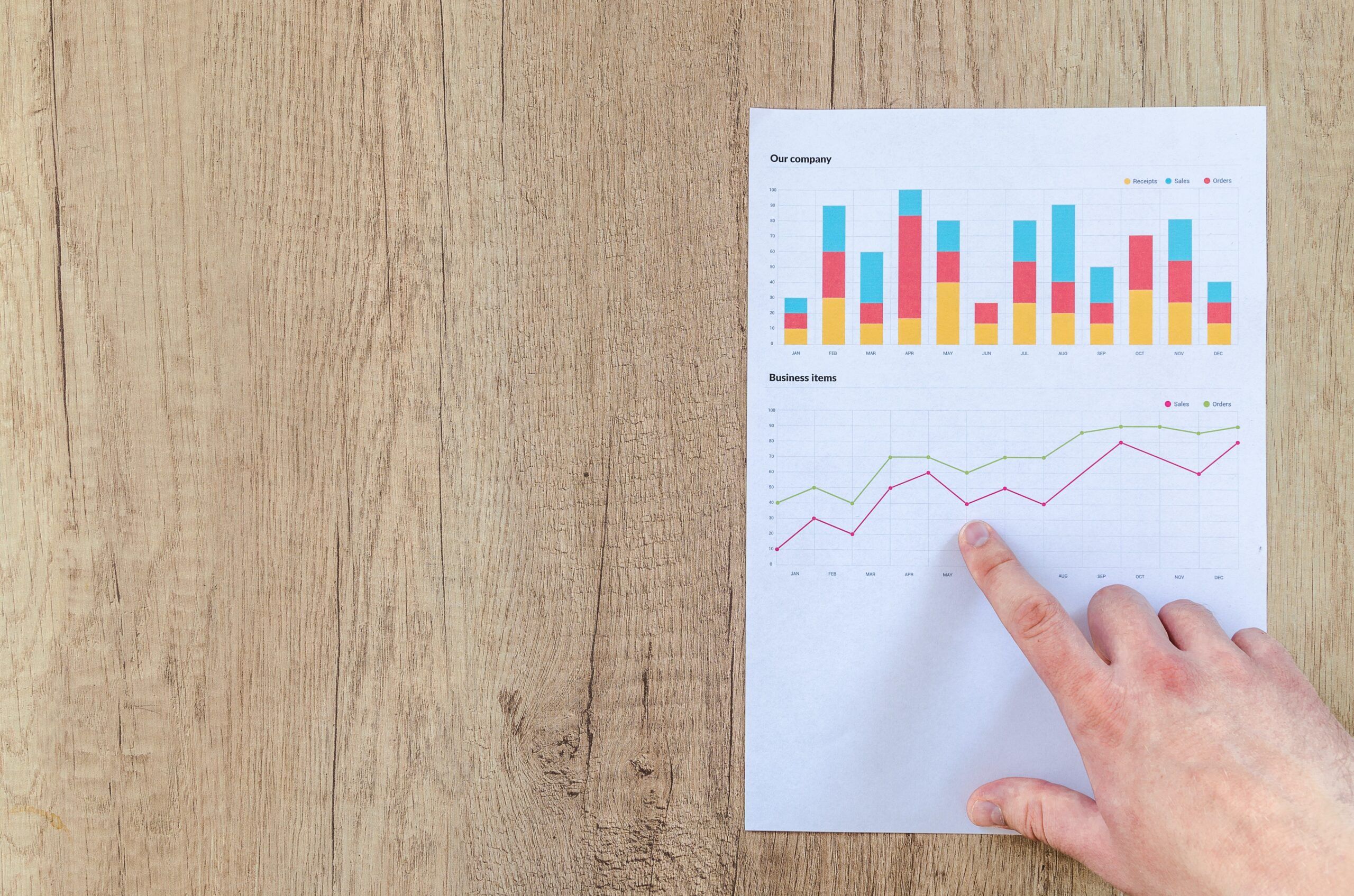- Data and Analytics in Restaurant Marketing
- Importance of Data and Analytics in Restaurant Marketing
- Steps for Using Data and Analytics to Improve Restaurant Marketing Performance
As the restaurant industry becomes increasingly competitive, it is more important than ever to use data and analytics to improve marketing performance.
With the abundance of data available through various channels, restaurants have the opportunity to gather actionable insights about their customers, menu, and overall business operations. By leveraging this information, restaurant owners and marketers can create targeted marketing campaigns, adjust their menus, and improve customer experience.
However, the challenge lies in knowing how to effectively collect, analyze, and use the data points.
In this article, Orders.co will provide a comprehensive guide on how to use data and analytics in your restaurant’s marketing performance to get better results. Whether you are a small local restaurant or a large chain, the strategies outlined in this article can help you stay ahead of the competition and grow your business!
Data and Analytics in Restaurant Marketing
Data and analytics are becoming increasingly important in the world of restaurant marketing.
In simple terms, data refers to the information that is collected through various channels, such as point-of-sale systems, social media platforms, and customer feedback.
Analytics, on the other hand, involves using this data to identify patterns, trends, and insights that can be leveraged to make informed decisions about marketing strategies.
By harnessing the power of restaurant data analytics, restaurant owners and marketers can gain a deeper understanding of their customers’ preferences, behavior, and needs. This enables them to create targeted marketing campaigns, improve the customer experience, and ultimately drive more sales and revenue.
Importance of Data and Analytics in Restaurant Marketing
In today’s competitive restaurant industry, data and analytics play a critical role in shaping effective marketing strategies. Here are some key reasons why data and analytics are important for restaurant marketing:
Better Understanding of Customer Behavior
By tracking data such as customer demographics, purchase history, and preferences, restaurants can gain insights into what their customers want and tailor their marketing efforts accordingly.
This allows for more personalized marketing and improved customer experience, leading to increased customer loyalty and higher revenue.
Identification of Areas for Improvement
Analyzing data such as sales figures, restaurant’s menu performance, and traffic patterns can help restaurants identify areas that need improvement.
This includes menu adjustments, operational changes, and marketing campaigns, all of which can be fine-tuned based on the insights gained from data analysis.
More Effective Marketing Campaigns
By using data and analytics to inform marketing campaigns, restaurants can create more targeted and effective promotions.
This can include email marketing based on customer data, social media advertising based on engagement data, and special promotions based on sales data.
Real-Time Monitoring of Marketing Performance
By tracking key metrics such as ROI and engagement metrics, restaurants can quickly identify which marketing campaigns are successful and which ones need adjustment.
This allows for agile marketing strategies and the ability to adapt to changing market conditions.
Steps for Using Data and Analytics to Improve Restaurant Marketing Performance
Now that you understand the importance of data and analytics in restaurant marketing let’s take a look at some key steps you can take to leverage this information:
Gather Data from Multiple Sources
Gathering data from multiple sources is an essential first step in using data and analytics to improve your restaurant’s performance. There are various sources from which you may collect data to help you make informed decisions on how to improve your restaurant’s marketing performance.
Here are some potential sources to consider:
Point of sale (POS) system
Your POS system can provide valuable POS data, such as the most popular menu items and the busiest hours of operation.
Customer Relationship Management (CRM) Software
CRM software can help you keep track of customer data, such as demographics, purchase history, and feedback.
Social Media Analytics Tools
Social media platforms such as Facebook, Instagram, and Twitter offer analytics tools that can provide insights into customer engagement and preferences.
Online Review Platforms
Online review platforms such as Yelp or TripAdvisor can provide feedback from customers on their dining experience.
By monitoring online reviews, you can gain insights into what customers like and dislike about your restaurant business and use this information to make adjustments to your menu, service, and overall customer experience.
Your Inbox, Your Rules!
Tailor your newsletter with the topics you're most interested in.
Analyze Data to Identify Patterns and Trends
Once you have collected relevant data, the next step is to analyze it to identify patterns and trends that can inform your restaurant’s marketing strategy.
This process involves reviewing your restaurant data for insights that can help you make informed business decisions about your menu, hours of operation, and marketing campaigns. Here are some tips to help you analyze your data effectively:
Look for patterns and trends over time to identify seasonal or cyclical changes in customer behavior, sales, or social media engagement.
Identify which menu items are most popular and which ones are underperforming to make informed decisions about your menu offerings.
Examine customer demographics and behaviors to personalize your marketing campaigns and improve the customer experience.
Review your data for correlations or relationships between different variables to identify areas for improvement, such as underperforming hours of operation or ineffective marketing campaigns.
Use visualization tools such as graphs or charts to make it easier to spot trends and patterns in your data.
Create Targeted Marketing Campaigns
Once you have collected and analyzed the data, it’s time to create targeted marketing campaigns that resonate with your customers. Below are some key points to consider when developing your marketing strategies based on your restaurant analytics:
Use email marketing to target customers based on their past purchases, preferences, and behaviors.
Utilize social media advertising to reach new potential customers based on their demographics and interests.
Develop special promotions based on your sales data to incentivize customers to visit your restaurant during slower periods or to try new menu items.
Consider creating loyalty programs to reward customers and encourage them to come back more often.
Personalize your marketing based on customer data to create a more engaging and memorable experience for your customers.
Use dynamic pricing to adjust prices based on sales data, demand, and competition to optimize revenue.
By targeting your marketing efforts based on restaurant data analytics, you can increase the effectiveness of your campaigns and ultimately drive more traffic and revenue to your restaurant.
Monitor and Adjust Marketing Strategies
Once you have implemented your marketing strategies based on data and analytics, it is essential to continuously monitor and adjust them to ensure their effectiveness.
Monitoring your marketing campaigns allows you to track their success and identify areas for improvement. Here are some key points to take into account when monitoring and adjusting your marketing strategies:
Measure ROI: Measure the return on investment (ROI) of your marketing campaigns by tracking the revenue generated as a result of your efforts compared to the cost of the campaign.
Track engagement metrics: Track engagement metrics such as click-through rates, open rates, and conversion rates to gauge the effectiveness of your marketing campaigns.
Modify marketing campaigns: Based on the results of your monitoring, adjust your marketing campaigns to improve their effectiveness. This could include modifying the messaging, targeting a different audience, or changing the advertising platform.
Adjust menu items and prices: Analyze sales data to identify underperforming menu items or pricing strategies and adjust accordingly.
Integrate inventory management system: Integrate an inventory management system in order to track product availability and levels. This will help you ensure that you have enough stock on hand to meet customer demand, as well as identify any potential issues with menu items or ingredients.
Change operational hours: Analyze traffic patterns and sales data to adjust your hours of operation to optimize revenue and improve customer experience.
By monitoring and adjusting your marketing strategies regularly, you can ensure that your restaurant is reaching its full potential and providing the best possible experience for your customers.
Take Advantage of the Power of Data & Analytics and Watch Your Restaurant’s Marketing Performance Soar to New Heights
In today’s data-driven world, utilizing data and analytics can significantly enhance your restaurant’s marketing performance.
By analyzing customer behavior, preferences, and feedback, you may create personalized and targeted marketing campaigns that increase customer satisfaction, engagement, loyalty, and revenue.
So, make data-driven decisions, and let the numbers lead the way to a successful restaurant marketing strategy!



